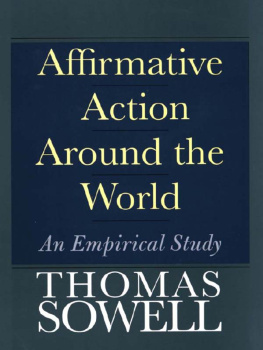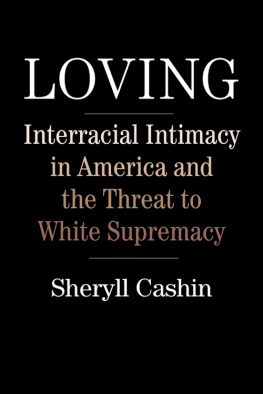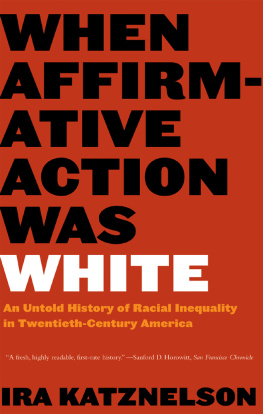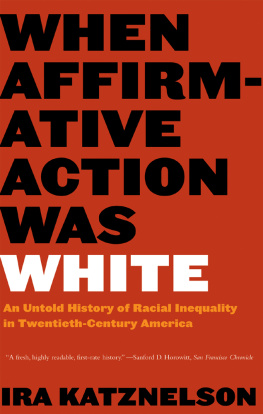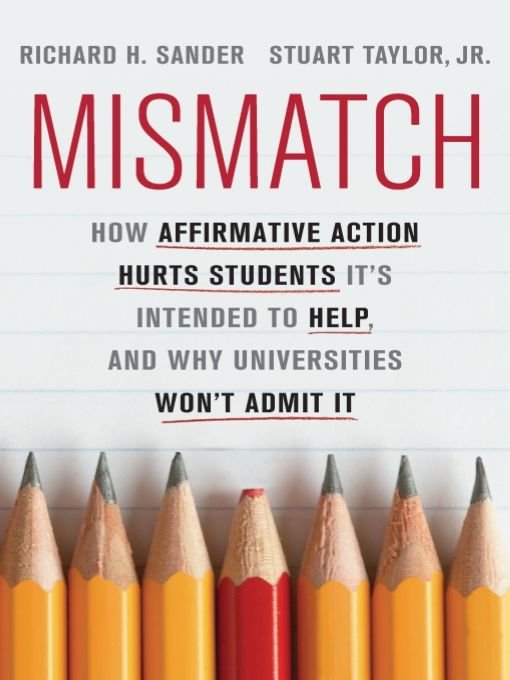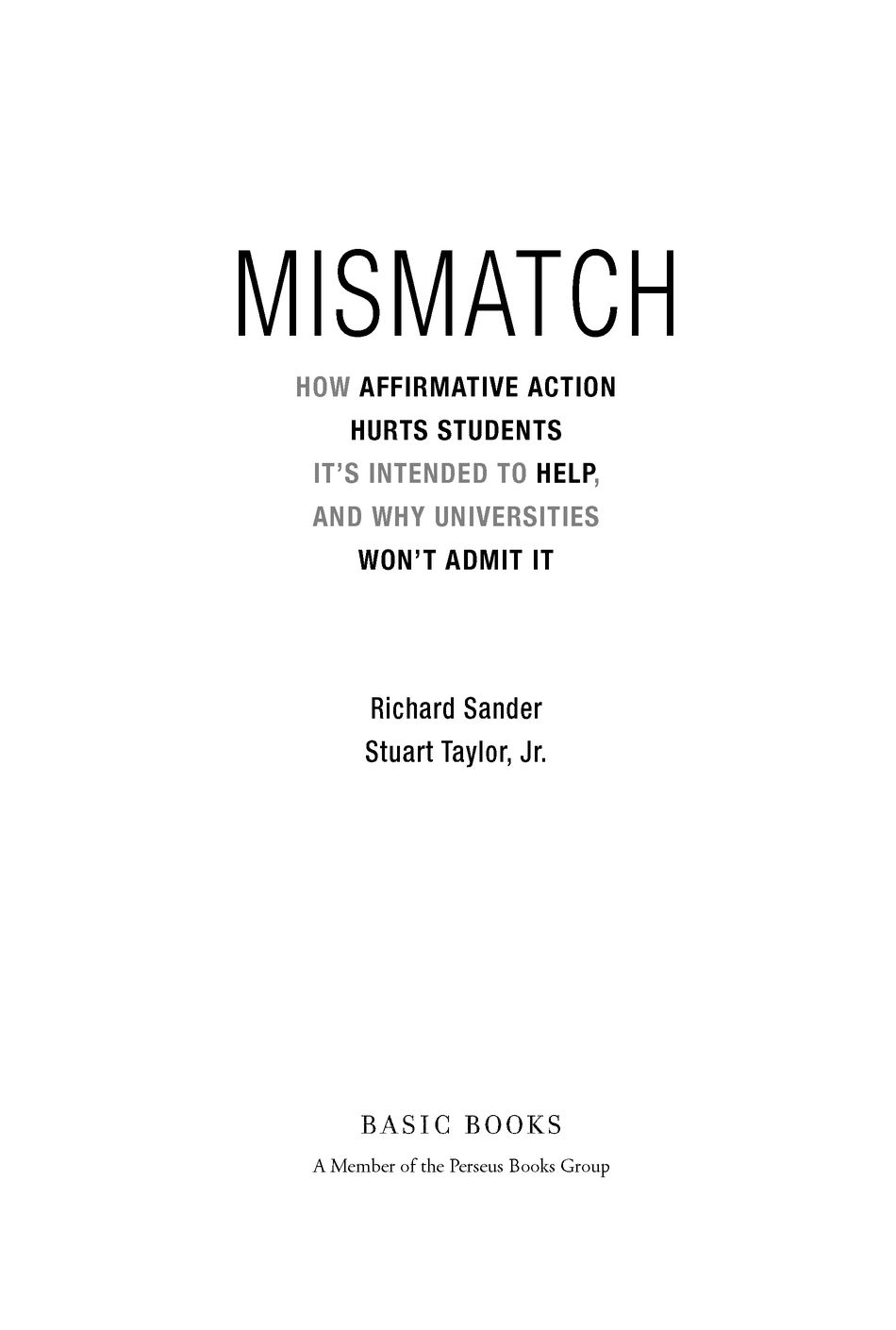Table of Contents
Table of Figures
From Richard Sander:
To Fiona, with all my love
From Stuart Taylor Jr.:
To Gwennie, Rodger, Clare, and Jack,
with much love
Iknow that most men, including those at ease with problems of the greatest complexity, can seldom accept even the simplest and most obvious truth if it be such as would oblige them to admit the falsity of conclusions which they have delighted in explaining to colleagues, which they have proudly taught to others, and which they have woven, thread by thread, into the fabric of their lives.
LEO TOLSTOY
PREFACE
AFFIRMATIVE ACTION IN HIGHER EDUCATION is one of those issues that, like abortion and prayer in schools, divides people so deeply that dialogue across the chasm often seems impossible.
This book attempts to bridge the chasm.
We see merits on both sides of the moral issues raised by affirmative action. But moral arguments have dominated our national dialogue on the issue for decades, and they have neglected a more fundamental question: Does it work?
When the focus shifts from Is it right? to Does it work? a whole series of important real-world questions open up. And ideology becomes less important. Although people profoundly disagree on whether racial preferences are a legitimate way of expanding opportunity, almost everyone agrees on the underlying goalexpanding opportunity. And we hope that almost everyone would agree that if current programs are actually leading many or most preferred-minority students into academic distress and self-doubt as well as damaging their long-term success, something has to change.
This book demonstrates in detail how racial admissions preferences often undermine the success of the people they are intended to help. As if that were not bad enough, the pervasive secrecy that veils the operation and effects of racial preferences even from most academics has led to deception, ostracism of truth-tellers, lack of accountability, and an unwillingness to face awkward facts and undertake needed reforms. This book takes you on a tour of this largely hidden world.
We reveal much that is shocking, but we also see reason for hope. We find that neither tinkering by the Supreme Court nor the outright bans adopted by six states have effectively addressed the core problems. We think some moderate but dramatic reformslimiting some particular abuses, improving the focus of preferences on the nonaffluent of all races, and making higher education admissions and outcome highly transparentcan go a long way toward correcting the worst abuses and could set in motion a cycle of virtuous self-reform that could turn a dysfunctional system into a highly effective, genuinely helpful one.
Given the emotional nature of this issue, we thought it would make sense to introduce ourselves and explain why we decided to write this book.
RICK SANDER
I am white, and I grew up in a conservative rural town in the Midwest. But by the time I finished college I knew that what I most wanted to do was work on issues of racial justice, especially those played out in our largest cities, which at the time (the end of the 1970s) were reeling. I became a community organizer in a nearly all-black neighborhood on Chicagos South Side and then worked for other groups that dealt with issues of race and urban revitalization. I was part of a network of young progressives who were tremendously energized by the 1983 campaign of Harold Washington to become Chicagos first black mayor, and when he shocked everyone by actually winning, I worked on his transition team to formulate housing and tenant law reforms. Some reforms passed, but most got mired in gridlock.
Around this time I developed the mantra that has guided my professional life ever since: Opportunities for real reform are rare and should be seized. When they come, it is incredibly important for reformers to get it right. Political capital should not be spent on programs that do not work or that produce harmful, unintended side effects. This, in turn, implies that those who really believe in reforms must also be their most demanding critics; they must seek out data to evaluate what works and what does not, and above all they must follow the facts where they lead.
I returned to school to study economics and law, and I became very interested in the problem of housing segregation. Despite the passage of fair housing laws, black-white segregation remained very high in the cities, and many liberals concluded that the laws were simply ignored. But there was some impressive, overlooked evidence that actual discrimination rates had fallen sharply since the 1960s. I developed and tested explanations of segregation that could reconcile these facts and that pointed toward different and more effective ways of tackling segregation directly. As I became closely involved in civil rights work, I was struck again and again by the way strongly held beliefs about public policy could blind people on all sides of important issues to the actual state of affairs. Otherwise smart and honest people often screened out inconvenient facts or felt that acknowledging weaknesses in their position only gave aid and comfort to their opponents. I saw this while serving as board president of a large fair housing organization, when some of my colleagues were reluctant to confront and address obvious cases of corruption or incompetence because to do so would embarrass the movement.
As I recount in Chapter Four, I started to examine the operation and effects of affirmative action when, as a young law professor at UCLA in the mid-1990s, I became involved in efforts to improve the quality of academic support for struggling law students, many of whom had been admitted with large racial preferences. It soon became clear that these preferences were undermining rather than helping the students they were intended to aid. When California voters passed a ban on the use of racial preferences in 1996 (known as Proposition 209), I worked with colleagues at the law school to develop a race-neutral system of smaller, socioeconomic preferences that would expand opportunity while also improving academic performance. The class that we admitted in 1997 was not only (by economic measures) the most diverse we had ever seen; it also went on to have the highest bar-passage rate in the schools history.
Within a few years, however, efforts to evade Proposition 209 and bring race back into admissions decisions got under way in various parts of the University of California, including some of its law schools. At around the same time I found better data that would let me test my hypotheses about the effects of large racial preferences. In January 2005 I published an article that laid out for the first time the detailed operation of preferences in a sector of higher education and presented an array of evidence suggesting that the current system generally made black students worse off, both individually and collectively. This article generated enormous interest and debate; there was clearly a hunger in the legal academic community in generaland in particular from black studentsfor information on the largely hidden system of racial preferences.
That was the good news, but on the bad side were all the unhappy problems I had encountered in other areas of social policy, especially those touching on race. Those who believed in affirmative actionincluding some close and wise friendswere upset to see its inner workings revealed and critically examined; they saw this as simply providing aid and comfort to opponents who wished to abolish all racial preferences. Other prominent friends privately cheered my article as a necessary step toward reform but felt they must remain silent about their views for fear of stepping into the withering ideological crossfire between partisans on either side. And the leading institutions of legal education not only refused to take up the issue of reform but also took steps to make it more difficult for anyone to continue any evaluation of law school preference programs.



